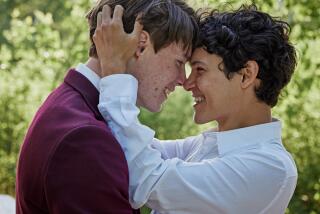Modern Royals Practice the Common Touch in Picking Mates
- Share via
PARIS — European newspaper gossip pages and celebrity magazines have had ample pickings with the escapades of the British royal family, whether it was Sophie Rhys-Jones’ indiscreet musings to a bogus Arab sheik or public sightings of the Prince of Wales with his longtime lady companion.
But lately, headlines are being made by younger princes on the continent, heirs to some of Europe’s oldest thrones, as they go about the very ordinary business of finding consorts. They have no real power in the constitutional systems of Western Europe, but their comings and goings draw attention worthy of movie stars.
In the Netherlands, Crown Prince Willem-Alexander, 33, is engaged to be married in February to an Argentine woman, Maxima Zorreguieta. The announcement in March caused a furor, not because Zorreguieta, 29, is Argentine, but because her father was a government minister during the 1976-83 military dictatorship, during which 30,000 dissidents disappeared.
In Norway, flamboyant Crown Prince Haakon, 27, sparked a scandal with his engagement to a part-time waitress, model and Oslo University anthropology student, Mette-Marit Tjessem Hoiby, who has a son from a previous relationship.
First came the revelation that the couple was living together. Then came news that the father of Hoiby’s son had a drug conviction, and she was once a fixture on Oslo’s drug-filled rave party scene. The couple will wed in August.
Prince Felipe of Spain, 33, has not announced plans to wed. But his girlfriend is onetime lingerie model Eva Sannum, whose past photos prompted a few “tsk-tsks” from the country’s conservative Catholic quarters. What most concerns Spaniards is that Sannum, 26, comes from common stock and her parents are divorced.
Mostly it’s a matter of the new generation’s changing lifestyles, veteran royal-watchers say. No longer cloistered in castles, these royals are mixing with common folks, occasionally even falling in love. That may endear them to a new generation of subjects, who appear more ambivalent than their parents about the usefulness of monarchies.
“The whole ethos of monarchies has moved on a bit from the time when the queen married off her children and grandchildren and even great-grandchildren,” said Donald Foreman, secretary general of the International Monarchist League in London, which publishes the journal Monarchy.
“In those times, the upper classes, be they ordinary people or the monarchy, kept more or less to themselves,” he said. “Nowadays, the children of monarchs tend to go to ordinary schools--or at least schools where other children go. . . . Human nature being what it is, it’s not surprising they fall for someone who in times past might have been considered unsuitable.”
At the moment, with so many young royals finding these new kinds of brides, “there seems to be a bit of a backlash,” Foreman said, “with people saying, wait a minute, we don’t want our prince marrying somebody ordinary. . . . There is a sort of dilution of the differentness that surrounds monarchy, which is part of its attraction.”
In the Netherlands, Willem-Alexander had to placate some unlikely critics, including left-wing members of Parliament and human rights activists, who objected to the idea that their future queen might be connected to human rights abuses in Latin America.
Zorreguieta managed to defuse much of the outrage by demonstrating that she speaks fluent Dutch and is becoming a Dutch citizen. The controversy also lessened when it was announced that her father wouldn’t attend the nuptials.
In Norway, Crown Prince Haakon reportedly was so concerned about the reaction against his bride-to-be that he considered abdicating. Still, the controversy was enough to give birth to a movement to turn Norway into a republic.
The appearance of Spain’s Prince Felipe last fall on the cover of Hola! magazine with Sannum, and paparazzi sightings of the two on a skiing vacation, have heightened speculation that a royal wedding may be in the offing.
In the pro-monarchist newspaper ABC, an academic wrote that it would be “inconceivable to see the throne occupied in this century with perfect dignity by Maria Christina of Austria, Victoria Eugenia of Battenberg . . . filled by a young woman lauded for the perfect measurements of a model.”
The public seems more accepting. A recent newspaper poll showed that 61.9% of Spaniards would approve.
More to Read
Sign up for Essential California
The most important California stories and recommendations in your inbox every morning.
You may occasionally receive promotional content from the Los Angeles Times.













